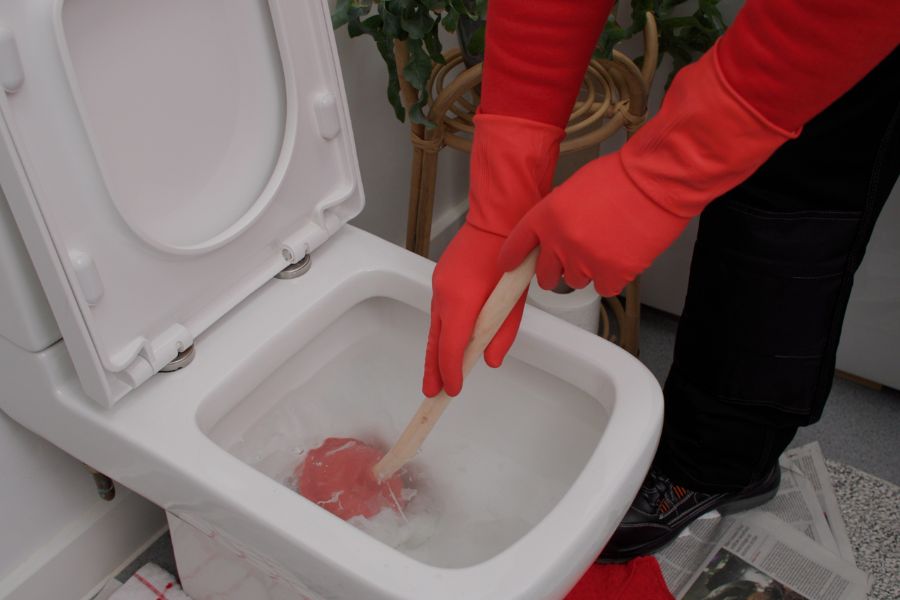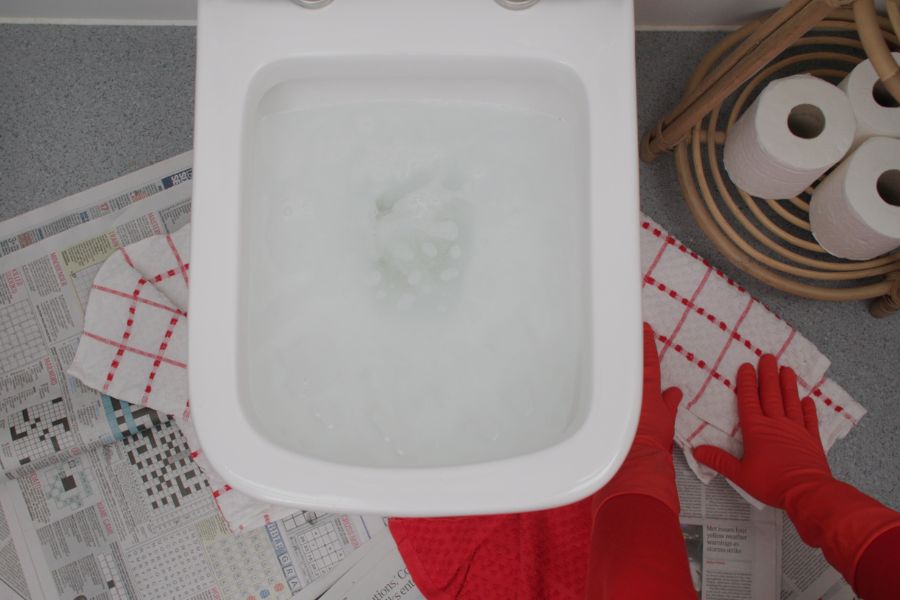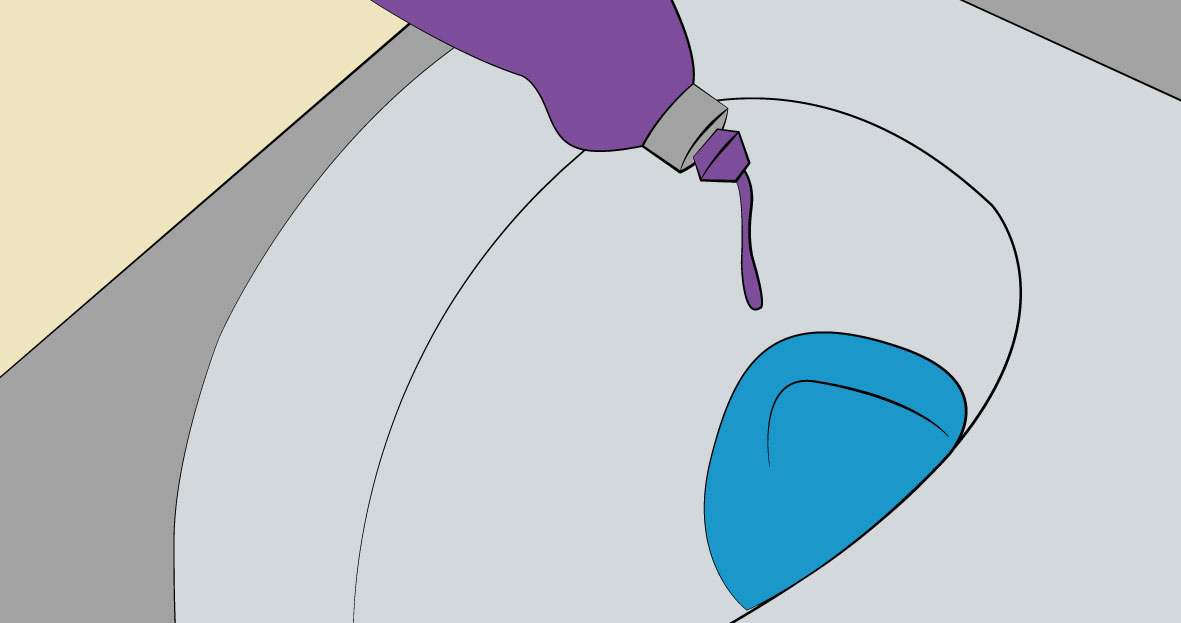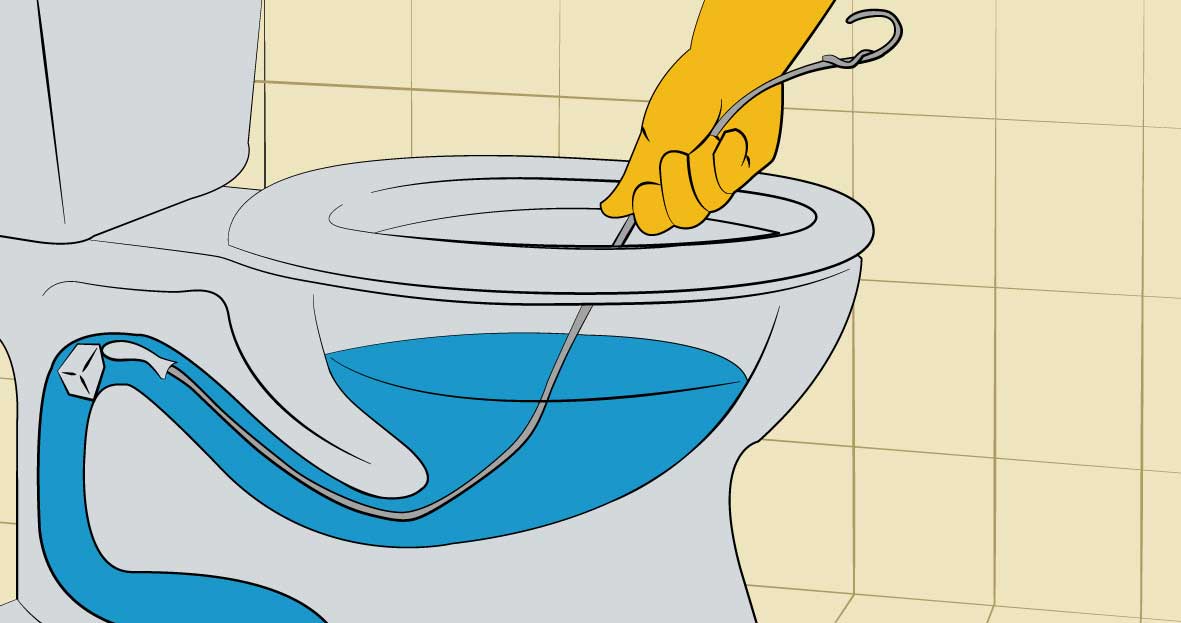Plumbing advice
How to unblock a toilet
12 Apr 2017 • 8 minutes


A blocked toilet can be a real nightmare. And for some reason, it often seems to happen at the worst possible moment.
This guide explains how to unblock a toilet and how to prevent toilet blockages from happening in the first place.
Our Home Expert, Chris shows the best way to unblock a toilet with a plunger in the video below:
If you have a toilet plunger handy, you can also follow these five simple steps to help unblock your toilet. No plunger? No Problem. Skip to the section below where we detail how to unblock a toilet without a plunger.
Firstly, you’ll need the following tools and supplies to help you fix a badly blocked toilet:

Use old towels or newspapers to soak up spills and protect the bathroom floor. Make sure to also protect yourself with rubber gloves and wear old clothes.
Before you start unclogging, it’s important to ensure the toilet won’t overflow. You can do this with the shutoff valve in the pipe that comes out of the wall behind the toilet.
Turn the shutoff valve clockwise gently but don’t try to shove or over-tighten it. If it doesn’t want to move, spray a little oil on the valve to loosen it.
If you have an older toilet you’ll need to deal with the float as you won’t have a valve. To do this, take the lid from the toilet tank and use something to keep the float upright, so the tank can’t keep refilling when flushed.
While a plunger is often the simplest way to unblock a toilet, it can often be ineffective simply because you’re trying to use a sink plunger to unblock a toilet!
A toilet plunger should also be completely submerged in water to work, so if the toilet isn’t full of water, you may need to add some using the bath, or sink, and your handy bucket.
Tip: Soften the toilet plunger by soaking it in hot water for five minutes before use as this should make a better seal.
Place the plunger under the water, completely covering the pipe. Slowly and firmly push down to create a seal, then pull up to create a vacuum to dislodge the blockage. Repeat this activity, increasing the speed with which you work, and expect to continue for at least 15 minutes.
With any luck you will find that the water drains and the blockage is either sucked out or dissipated. If the toilet drains, but the blockage doesn’t go away, fill the toilet with more water, back to its standard level, and then start plunging again. Stubborn clogs often require several rounds of plunging.
Few things are more annoying than a badly blocked toilet – but a blocked toilet when you don’t have a plunger to hand is definitely top of the annoyance list.
Begin by putting down newspaper around the toilet to catch any spills or splashes and pulling on your rubber gloves.
Once this is done, you will need to collect a few household items that will help you unblock your toilet:

Unblocking your toilet with washing up liquid should be the first way you try to unblock your toilet without a plunger. To do this:
If nothing seems to have changed, watch out for the water level dropping. If that happens, repeat the process again with the washing liquid and hot water and you should find that it dislodges the rest of the obstruction.
Using cling film to unblock a toilet definitely has a mixed reputation. Its success seems to depend on the water pressure in your toilet system.
If you have high water pressure, this works really well, but if you have low water pressure then it’s often ineffective.
There is one level of unpleasantness worse than having a blocked toilet and no plunger, and that’s having a blocked toilet that is ‘full’ and no plunger.
Honestly, this can become a little messy, but it’s often very effective.

To unblock your toilet with a coat hanger you will need a wire hanger that you will be able to bend into shape.
While this is one of the easiest ways to unblock a toilet, it’s also one of the ways that often has only partial success.
It should be used in conjunction with the washing up liquid system or the plastic bottle system to ensure complete removal of the obstruction rather than just poking a hole in it, which leaves it to re-clog again.
The first step to preventing further toilet blockages is understanding what has caused the initial blockage. If this is something that has been happening regularly then steps need to be taken to address the root cause.
A toilet that is becoming regularly blocked can happen for a number of different reasons.
Some common causes of toilet blockage may include:
Common culprits of this are wipes and sanitary products. You should only flush human waste and toilet paper down your toilet!
If too much toilet paper has been used it doesn’t always dissolve properly, thicker ply toilet paper can also have issues being dissolved.
To prevent limescale buildup the toilet should be cleaned regularly.
Although a great option for saving money and water, this type of toilet is inherently more prone to blockages due to a lower amount of water being used to flush the toilet.
It’s straightforward to identify whether this is the cause of any toilet blockage as the same issue will be happening to more than one toilet or drain in the house.
If you have a blocked toilet vent, the toilet loses the pressure it needs to flush properly.
Don’t let a burst pipe or blocked drain slow you down. Secure your peace of mind by taking out our plumbing and drainage cover and get access to a nationwide network of trusted engineers. Rest easy knowing that reliable solutions are just a phone call away.
Our help & advice articles cover Plumbing, Home heating, Electrical, Energy-saving and Home maintenance.